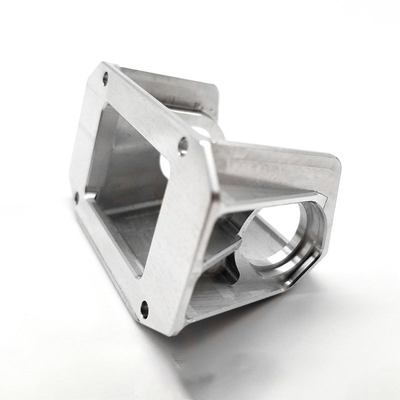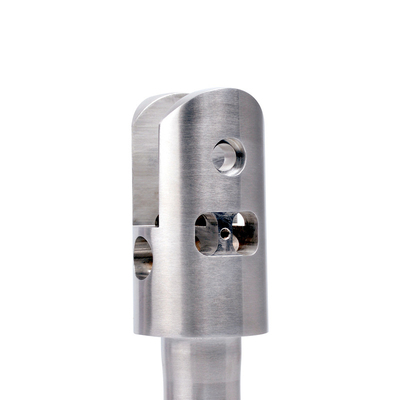Is Magnesium Magnetic?

Magnesium (Mg) is a chemical element with the symbol "Mg" and atomic number 12. It is a light, silvery-white metal commonly found in the Earth's crust and is essential in various industrial, biological, and chemical applications. Magnesium’s behavior under magnetic fields has intrigued scientists due to its role in both nature and technology. One of the primary questions about magnesium is whether it is magnetic.
In this article, we will explore the fundamental nature of magnetism, discuss the magnetic properties of magnesium, and examine the circumstances under which magnesium may exhibit magnetism. We will also explore applications of magnesium in contexts related to magnetism and its interaction with magnetic fields.
What is Magnetism?
Definition of Magnetism
Magnetism is a class of physical phenomena associated with the movement of electric charges. It results from the electromagnetic force, one of the four fundamental forces of nature. Objects and materials exhibit magnetic behavior due to the alignment of electron spins and the presence of unpaired electrons in atoms.
Types of Magnetism
There are several types of magnetism, categorized based on the material's response to an external magnetic field. These include:
-
Diamagnetism: A form of magnetism where materials are repelled by magnetic fields. This occurs because their atoms have no unpaired electrons, and they create small, opposing magnetic fields in response to external fields.
-
Paramagnetism: In paramagnetic materials, some atoms or ions have unpaired electrons, which align with an external magnetic field, causing attraction. However, this magnetism is weak and temporary.
-
Ferromagnetism: Materials like iron, cobalt, and nickel exhibit strong, permanent magnetism. Their atomic magnetic moments align in parallel within magnetic domains, producing a strong magnetic field.
-
Antiferromagnetism: In antiferromagnetic materials, adjacent atomic spins are aligned in opposite directions, canceling out the material's overall magnetism.
-
Ferrimagnetism: Similar to ferromagnetism, but with unequal opposing spins, resulting in partial magnetic cancellation and a net magnetism.
Factors Affecting Magnetism
The magnetic behavior of materials is influenced by factors such as temperature, atomic structure, and electron configuration. The strength and direction of an applied magnetic field also play a significant role.
Magnetic Properties of Magnesium
Basic Characteristics of Magnesium
Magnesium is a lightweight metal with a density of 1.738 g/cm³, making it one of the lightest structural metals available. It has a hexagonal close-packed (HCP) crystal structure at room temperature. While magnesium has several interesting physical properties, its magnetic properties have been a subject of investigation due to its paramagnetic nature.
Is Magnesium Magnetic?
Magnesium, like most elements, exhibits diamagnetism. This means that when placed in a magnetic field, magnesium creates an induced magnetic field in the opposite direction, leading to a very weak repulsion from the applied magnetic field. The diamagnetic properties of magnesium are extremely weak, and under normal conditions, it is considered non-magnetic.
Magnesium has no unpaired electrons in its electron configuration (1s² 2s² 2p⁶ 3s²), which is why it does not exhibit strong magnetic behavior. The lack of unpaired electrons means that there are no permanent magnetic dipoles in the material that could align with an external magnetic field.
Paramagnetism of Magnesium Ions
However, magnesium in certain ionic forms can exhibit paramagnetic properties. For instance, Mg²⁺ ions in compounds may have unpaired electrons, which can give rise to paramagnetic behavior in specific chemical environments. Paramagnetism in magnesium ions is temperature-dependent and can be observed under specific conditions in laboratory settings.
Diamagnetic Behavior of Magnesium
The diamagnetic properties of magnesium can be demonstrated in a magnetic field, but the effect is incredibly weak. When subjected to a strong magnetic field, magnesium will be weakly repelled, as is the case with all diamagnetic materials. The strength of this repulsion is so minimal that it cannot be detected without sensitive instruments.
Comparison with Other Elements
Magnesium’s diamagnetic behavior can be compared to other elements and metals, such as aluminum (which exhibits paramagnetism) and iron (which is ferromagnetic). While metals like iron can easily be magnetized and retain their magnetic properties, magnesium’s weak diamagnetism means that it has no practical applications in creating magnets or magnetic materials.
Temperature and Magnetic Behavior of Magnesium
Effect of Temperature on Diamagnetism
Temperature plays a crucial role in the magnetic behavior of materials. For most diamagnetic materials like magnesium, temperature has little effect on their diamagnetic properties. However, at extremely low temperatures, quantum mechanical effects may influence the behavior of electrons, potentially altering the material's magnetic response.
High-Temperature Behavior
At high temperatures, magnesium retains its diamagnetic nature. Unlike paramagnetic materials, which lose their magnetism at high temperatures due to thermal agitation of electron spins, magnesium's electron configuration remains unaffected by temperature changes within typical ranges.
Magnesium Alloys and Magnetism
Introduction to Magnesium Alloys
Magnesium is often alloyed with other metals, such as aluminum, zinc, and rare earth elements, to enhance its mechanical properties. These alloys are widely used in aerospace, automotive, and electronic industries due to their light weight and strength.
Magnetic Properties of Magnesium Alloys
The magnetic behavior of magnesium alloys depends on the properties of the alloying elements. For instance, if magnesium is alloyed with ferromagnetic materials like iron or cobalt, the resulting alloy may exhibit magnetic behavior. However, the contribution of magnesium itself remains diamagnetic.
Application in Non-Magnetic Uses
Due to its diamagnetic properties, magnesium is often used in applications where non-magnetic materials are required, such as in electronic housings and casings for sensitive magnetic equipment. Magnesium's light weight and non-magnetic nature make it ideal for such purposes.
Applications of Magnesium in Magnetic Fields
Magnesium in MRI Technology
One of the key applications of magnesium’s non-magnetic properties is in Magnetic Resonance Imaging (MRI) technology. MRI machines rely on powerful magnetic fields to produce detailed images of internal body structures. Any magnetic materials within the machine can interfere with the imaging process, so non-magnetic materials like magnesium are used for certain components.
Aerospace and Automotive Industry
Magnesium’s lightweight and non-magnetic properties are beneficial in the aerospace and automotive industries, particularly in structural components where magnetic interference needs to be avoided. In addition, its diamagnetic nature prevents the material from interacting with magnetic fields in environments where precise electronic equipment is used.
Magnesium in Electronics
Magnesium is also used in the electronics industry due to its non-magnetic and lightweight nature. In applications where sensitive electronic components are involved, magnesium casings and structures can provide shielding from external magnetic fields without interacting with them.
Research and Developments in Magnesium's Magnetic Properties
Advances in Material Science
Research in material science continues to investigate the magnetic properties of various elements, including magnesium. While magnesium’s diamagnetic properties are well understood, studies are exploring how magnesium interacts with other materials and how it can be used in magnetic applications.
Magnesium in Superconductors
There has been interest in exploring magnesium’s role in superconducting materials. Superconductors are materials that exhibit zero electrical resistance and expel magnetic fields when cooled below a certain temperature (the Meissner effect). While magnesium itself is not a superconductor, its alloys, such as magnesium diboride (MgB₂), have been found to exhibit superconductivity at relatively high temperatures.
Conclusion
Magnesium, in its pure elemental form, is considered diamagnetic, meaning it is weakly repelled by magnetic fields. Its lack of unpaired electrons and closed-shell electron configuration contribute to its non-magnetic behavior. While magnesium does not exhibit strong magnetism, it plays a crucial role in applications where non-magnetic properties are required, such as in MRI machines, aerospace structures, and sensitive electronic equipment.
Magnesium alloys, under certain conditions, may exhibit different magnetic behaviors, but the primary role of magnesium in these alloys remains diamagnetic. Future research may uncover new ways in which magnesium can be used in magnetic and superconducting applications.
Reprint Statement: If there are no special instructions, all articles on this site are original. Please indicate the source for reprinting:https://www.cncmachiningptj.com/,thanks!
 PTJ® provides a full range of Custom Precision cnc machining china services.ISO 9001:2015 &AS-9100 certified. 3, 4 and 5-axis rapid precision CNC machining services including milling, turning to customer specifications,Capable of metal & plastic machined parts with +/-0.005 mm tolerance.Secondary services include CNC and conventional grinding, drilling,die casting,sheet metal and stamping.Providing prototypes, full production runs, technical support and full inspection.Serves the automotive, aerospace, mold&fixture,led lighting,medical,bicycle, and consumer electronics industries. On-time delivery.Tell us a little about your project's budget and expected delivery time. We will strategize with you to provide the most cost-effective services to help you reach your target,Welcome to Contact us ( [email protected] ) directly for your new project.
PTJ® provides a full range of Custom Precision cnc machining china services.ISO 9001:2015 &AS-9100 certified. 3, 4 and 5-axis rapid precision CNC machining services including milling, turning to customer specifications,Capable of metal & plastic machined parts with +/-0.005 mm tolerance.Secondary services include CNC and conventional grinding, drilling,die casting,sheet metal and stamping.Providing prototypes, full production runs, technical support and full inspection.Serves the automotive, aerospace, mold&fixture,led lighting,medical,bicycle, and consumer electronics industries. On-time delivery.Tell us a little about your project's budget and expected delivery time. We will strategize with you to provide the most cost-effective services to help you reach your target,Welcome to Contact us ( [email protected] ) directly for your new project.

- 5 Axis Machining
- Cnc Milling
- Cnc Turning
- Machining Industries
- Machining Process
- Surface Treatment
- Metal Machining
- Plastic Machining
- Powder Metallurgy Mold
- Die Casting
- Parts Gallery
- Auto Metal Parts
- Machinery Parts
- LED Heatsink
- Building Parts
- Mobile Parts
- Medical Parts
- Electronic Parts
- Tailored Machining
- Bicycle Parts
- Aluminum Machining
- Titanium Machining
- Stainless Steel Machining
- Copper Machining
- Brass Machining
- Super Alloy Machining
- Peek Machining
- UHMW Machining
- Unilate Machining
- PA6 Machining
- PPS Machining
- Teflon Machining
- Inconel Machining
- Tool Steel Machining
- More Material





